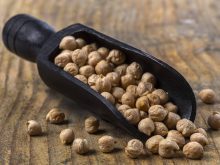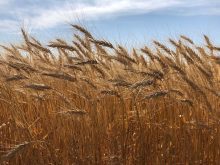MarketsFarm — Prices for grains, oilseeds and pulses are not as bad off as livestock values are due to the COVID-19 pandemic, according to Neil Townsend, chief market analyst for FarmLink Solutions in Winnipeg.
FarmLink hosted a webinar Wednesday to provide its outlook for the coming crop year. One thing Townsend stressed was there is likely no going back to what was normal before the COVID-19 pandemic.
“No one has a clear vision of what that means,” he said, noting the pandemic has been a black swan to the markets.
Read Also

U.S. grains: Corn, wheat ease after gains driven by Black Sea jitters
Chicago | Reuters – U.S. corn futures fell on Wednesday and wheat futures also dipped as fears eased about a…
“No one expected a pandemic back in May, June and July. It’s drastically disrupted our markets,” he said, but suggested canola prices benefited somewhat with selling opportunities.
While the livestock industry has been in trouble as its supply chain fell into turmoil, in comparison grains, oilseeds and pulses have held up much better. Movement of the three has continued quite well under the global circumstances, he said, though there has been a shortage of containers for pulse exports.
The Canadian dollar is likely going to bounce between 71-75 U.S. cents in the coming months, as a global recession looms and crude oil prices remain near historic lows, he said. One factor bound to affect the loonie in 2020 will be the U.S. election campaign.
“The Canadian dollar will react to how the market senses Donald Trump’s fate. I don’t know if that’s a positive or a negative. The U.S. dollar will be volatile as the election process proceeds,” Townsend said.
Looking at weather conditions, he said there’s not too much to be concerned about as it takes a great deal to severely damage most crops because of their resiliency.
Townsend expressed some caution about U.S. corn, as its carryout is expected to increase. Demand for corn will remain poor until the ethanol industry improves and U.S. exports increase, he said.
“It would be a good time for the U.S. and China to be friends. It would be a good time for China to throw a bone and co-operate on the Phase One trade deal commitments.”
Also regarding China, he said it’s quite unlikely the dispute between Canada and China will be resolved anytime soon. Nevertheless, Canada needs to expand its canola exports, as ending stocks are set to increase just as the domestic crush is near full capacity.
Townsend noted Canada’s canola exports have been helped by increased amounts to the European Union.
“We’ve seen the EU moving away from rapeseed production, but yet they have a mandate for biodiesel. Their mandate hasn’t changed, but their willingness to produce rapeseed has changed,” he said.
Wheat is expected to see global demand increase in light of the pandemic, as countries move to boost their stockpiles, Townsend said.
He’s not too worried about dry conditions the EU and the Black Sea region have been dealing with recently. Rather, he’s more concerned about the weather during the summer months as the crop develops. Should those dry conditions persist, he said, that would benefit Canadian wheat exports.
Also, Townsend pointed to vastly improved conditions in Australia, from which the wheat crop will be added competition for Canada’s exports. However, there has been talk of China increasing its wheat imports from the U.S.
As for durum, he said Morocco will likely see its production drop by up to 40 per cent, on top of an already poor 2019 crop. Durum production in the EU is also lower, which has contributed to tighter global supplies.
When it came to pulses, Townsend was cautious about lentils as there is a looming threat of oversupply globally, but there’s good demand from India, Pakistan, Sri Lanka and Bangladesh.
For green lentils specifically, he forecast fewer acres in Western Canada as greater competition has been coming from Kazakhstan and the rest of the Black Sea region.
There’s potential for a good upswing in yellow peas, as India’s harvest is in chaos due to lockdown measures and China has expressed interest in increasing its imports, he said.
Townsend also noted tighter global supplies of green peas just as stronger demand is coming from China and India.
Despite all of the trials and tribulations the various crops have been facing, Townsend gave a very important piece of advice to farmers.
“At this time, maintaining your rotation is the right course of action to take, just because trying to extrapolate and predict what the prices will be in the fall or next spring is very difficult. We just don’t know what type of world we will be living in at that moment.”
— Glen Hallick reports for MarketsFarm from Winnipeg.
















